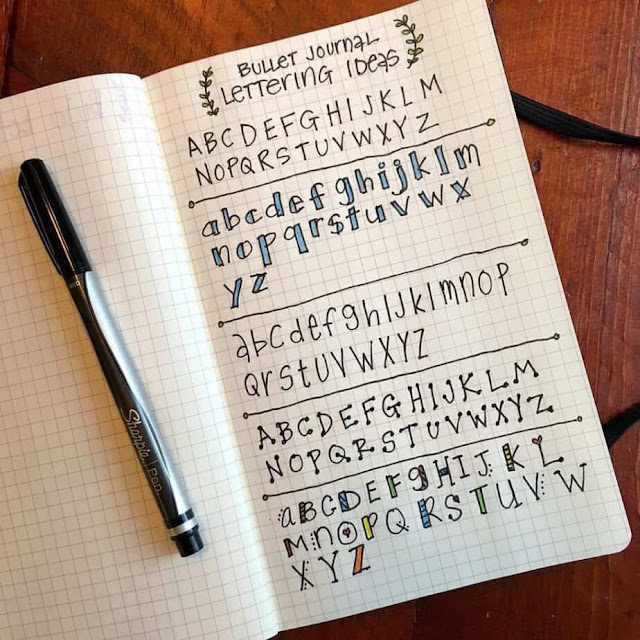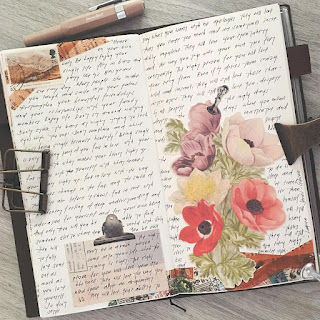We see asylums as creepy places, and some of them are legitimately haunted. When and why did they start? Let's begin there.
 |
| The Kirkbride Plan - PBS Learning Media |
During the times of at-home treatment for those with mental illness, some could not be around others or be contained. This is where being sent to "a home" started. Private hospitals depended on the money of wealthy families to care for their patients. Most hospitals had a ward for those who needed it. Asylums became something big when the idea of open space and kind treatment began to be considered the way to cure the mentally ill.
This required secluded places. The Quakers were the first to run with this and had laypeople running it, rather than medical physicians. Most other facilities had physicians as the head of the establishment. Thomas Kirkbride developed a plan and outline for how they should be set up. Almost every place used this system for at least 40 years. Kirkbride's plan called for only 250 patients in a building with a central core and long wings arranged so sunshine and fresh air can get in. Privacy was also provided.
As the local government got involved, the elderly were put into these places because the government tried to cut costs and could define "senility" as a psychiatric problem. This could save money at almshouses and hospitals. When the state wouldn't provide enough funding and the places soon overcrowded, they faced problems. Many patients didn't respond in this environment, particularly with dementia.
Nurses' training schools began to be included in these places around the 1860s. This had helped hospitals and staff hoped it would help asylums. For the first time, men were welcomed into the nursing profession, which the asylums welcomed. It is unknown whether this made a difference in medical care. In the 1930s the economy was bad and the war was going on. Funding was cut even more. Staff was hard to find as the war took them into service.
This was where doctors decided to try new things. Some created separate programs and outpatient programs. New therapies were created, like electroshock therapy, insulin, and psychosurgery. New medications were tried. Around 1950 the age of asylums was slipping away because of nursing homes providing for elderly. New systems and medications were returning the mentally ill to their own homes. Only a few still exist. There are some individuals who wonder whether some humans could use a constant, private environment.
Were They All Bad Places?
We have the perception that these places shoved people out of the way, abused them, and treated them badly. Did they all do this? No, the nuns and monks cared for people well over the years. Sadly, the asylums that did abuse their power gave horrible impressions of these care facilities. I will, however, note the failures of this system along with the successes.
 |
Victorian era restraint - Science
Museum |
Restraints had a reason, which was to stop someone from harming themselves, others, or keep them from tearing of clothes or lewd behavior. Critics claimed that the violence required to restrain some patients escalated the violence in the asylum. After a man was found strangled after being strapped to his bed in a straitjacket with no supervision overnight that ended restraints.
Asylums in some places encouraged treating those in them as ordinary people and expecting them to eat dinner, have tea, and behave normally. Using a system of rewards and punishments, they shepherded clients into normalcy. They tailored their treatments to specific conditions. This was the system the Tuke brothers created.
Many others were created with the idea of work and religion being a way to help individuals. The people in these asylums were given chores to do. At Hanwell 320 of the 560 patients were employed. Hanwell was self relient. They earned their keep and kept busy, which meant they didn't just sit around. No restraints were used here, which provided a challenge. Their last resort was isolation and creating less external stimulation so that they could calm down their flustered patients.
The humane treatment of people led to recovery and the lack of need for asylum. It was the lack of care that led to the opposite since neglect and abuses led to further insanity (literally). Unfortunately, the crowded nature of the buildings led asylum directors to maintain control with less staffing using restraint, padded cells, and drugging patients. They kept building onto places despite the common sense that said to stop, which made life horrible for those living there.
Before you had to have a license to oversee a "madhouse", those within these places were treated like inmates and were ways to make money. The madhouse act (1774) required a license and inspections during the year. For a while, the insane poor were not cared for, but that changed when the lunacy act of 1845 required them to care for the insane in their area.
Sexes generally didn't mix in asylums. It wasn't until the early 20th century that they mixed company, though there were still gendered wards to sleep in. Freedom was not the greatest, depending on where you were. There are people who never left the asylum after being committed. Other people also got to visit towns and work outside the asylum, so it depended greatly on what asylum you were committed to. Many places encouraged recreation within and outside of the building. Those that worked were paid.
Did Gender Matter?
Women, it seems, only came for short periods of time. They came for rest and were sent on their way upon being ready to go back. These women could also be admitted for problematic marriages or giving birth to illegitimate children (rape or not). Post-natal depression was a common reason, too. Unfortunately, they had few opportunities to go outside or play games (which you can blame on victorian ideals). This changed as time passed. The bonding between women and staff was strong. Work was encouraged in the needle room, laundry, and general housekeeping.
 |
Reasons to be committed
- Dangerous Minds |
The routine was to rise at 7 am, eat breakfast, work, eat lunch, and have tea. Airing courts were open between meals if you didn't work. Due to staffing issues in the female wings, nurses were known for dosing patients with paraldehyde to make their workload lighter (a jerk move, if you ask me).
The men in asylums before the first world war (for the most part) had none to look after them and were dirt poor. Shell-shocked men were sent here. The male wards weren't large. Escapes were more common in male wards. The schedule was the same, only they worked in kitchens and bakehouses. Men had more discipline in their ward. They had the freedom for sports and being in the musical program. Outdoor work could be allowed and often was.
Treatments
In the beginning, they just tried to keep them calm and occupied. If needed, they restrained someone. Insulin was used to treat schizophrenia because they thought it was an imbalance issue. This consisted of putting insulin in someone until they went into shock, then reviving them with a sugary dose of tea. It caused amnesia and killed diabetics. Causing seizures via metrazol was also a fad, which ended in broken vertebrae and amnesia. It was ended around the time of ECT.
What followed was ECT (electroconvulsive therapy) and lobotomies. ECT was causing an epileptic fit with electricity. Surprisingly, depressed patients actually felt better after this and the treatment is used on rare occasions. It did cause amnesia and suicidal tendencies, though.
Lobotomies are when you cut the brain tissue in the frontal lobe of the brain and this ended in the 1950s. It affected personality and brain function. Also, bleeding was used and mercury was used in manic people. Gyrators (tables that turned them upside down) and tranquilizer chairs were also used.
Removing organs was a "treatment" apparently and had a high mortality rate. At one time, they would induce fever and inject malaria in schizophrenia patients. Many died from this.
The biggest breakthrough was drugs. People still use them to manage their disorders today. The next largest help was talking through issues and occupational therapy (which is where they should have started in the first place!).
Restraints were used for manic, violent, and suicidal patients. Drugs were not a thing at this point. Straight jackets and fingerless gloves were the most common forms of this. Padded cells were used for violent or self-harming individuals. Less commonly, hydrotherapy (a continuous bath) was used. On the tub was placed a canvas sheet which left only your head sticking out. 1890 was when restraints were limited. Each use was to be recorded and approved by a medical professional.
 |
| Hydrotherapy - onedio |
Hydrotherapy is the idea that a bath will calm the person. It could be hours, days, or overnight and at any temperature. Warm water was used for insomniacs, cold for manic-depressive psychosis. Water was kept at a constant temperature through fresh water in and old water draining constantly. They wanted a patient to relax or even fall asleep. The person was in a hammock in the tub. This could also be a shower.
Why They Ended
The system was too large to function, in short. On top of that, funding was cut time and again. They also had a lack of staff, due to lack of money. Abuse ensued as a result. Psychiatric advances led to hospitals being able to take care of a lot of the people who need mental help. That eliminated the system itself. Drugs are the main reason for this and can allow mentally ill people to no longer need constant care. The mental health act of 1983 also allowed those that had been sent there to appeal their way out because they now had full rights back.
Research has proven that those involved in their treatment and in safe environments recover. Some medical staff actually think that the move to have hospitals take on the psych wards was a bad one. There are a few privately run facilities still around, but they are few. Given the abuse that ruined the few good practices in the system, I'd say that nobody will go for the idea again. When adequately staffed and run correctly, people recovered - it was the lack of staff that killed it and the bad methods that they chose to use that put it deep in its grave. They should have called the monks in and had them run everything. The monks wouldn't have done the damage that can never be undone.
Sources:
https://www.nursing.upenn.edu/nhhc/nurses-institutions-caring/history-of-psychiatric-hospitals/
https://www.lib.uwo.ca/archives/virtualexhibits/londonasylum/hydrotherapy.html
https://www.sciencemuseum.org.uk/objects-and-stories/medicine/victorian-mental-asylum
https://www.thetimechamber.co.uk/beta/sites/asylums/asylum-history/the-history-of-the-asylum
https://www.nlm.nih.gov/hmd/diseases/early.html
https://www.seeker.com/an-illustrated-history-of-the-mental-asylum-1766218599.html
https://www.talkspace.com/blog/history-inhumane-mental-health-treatments/























